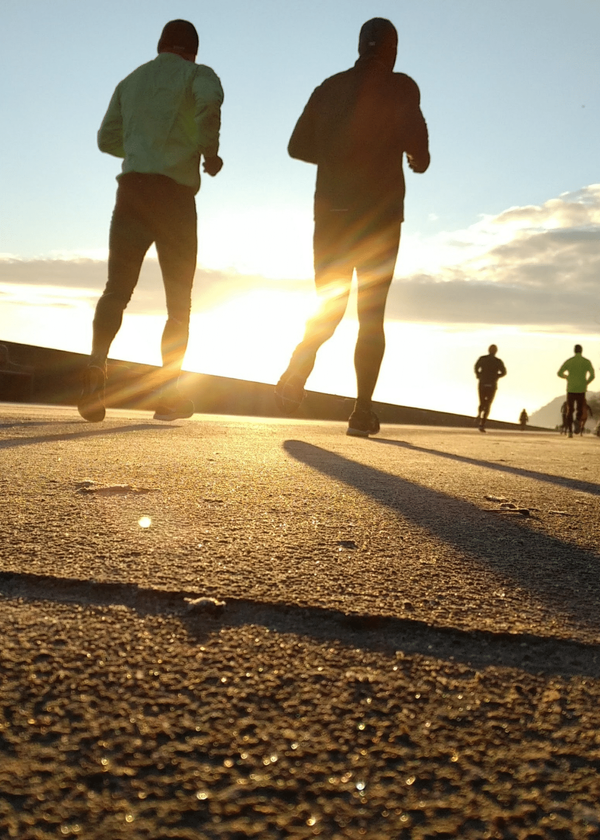Running is a fantastic way to stay fit, but it can also be a real knee-bender—literally! If you're tired of your knees throwing a tantrum every time you lace up your running shoes, you've come to the right place.
Knee Injuries
Knee injuries are like uninvited guests at a party—they show up when you least expect them and refuse to leave. Common knee injuries include patellofemoral pain syndrome, runner's knee, and iliotibial band syndrome. These injuries often result from overuse, poor running form, or wearing the wrong shoes.
The knee joint is a complex structure that relies on the harmony of muscles, tendons, and ligaments. When one part of this symphony is out of tune, it can lead to painful knee experiences. Understanding the anatomy of your knee can help you prevent injury and keep your knees singing a happy tune.
Strengthening Your Leg Muscles
Think of your leg muscles as the bodyguards of your knee joint. Strong muscles, particularly the quadriceps, hamstrings, and calf muscles, provide stability and support to your knees.
Exercises like squats, lunges, and leg presses are excellent for building muscle strength. Don't forget about your hip joints—strong hips can reduce the strain on your knees. Remember, a strong foundation is key to preventing knee pain.
Strengthening exercises are the backbone of injury prevention. They build muscle strength and improve joint stability, reducing the risk of knee injuries. A consistent strengthening program is key to keeping your knees in top condition.
Importance of Stretching
Stretching is like giving your muscles a warm hug before they get to work.
- Dynamic stretches before a run increase blood flow and prepare your muscles for action.
- Static stretches after a run help maintain flexibility and prevent tight muscles.
These stretches can prevent the dull pain that often accompanies tight muscles. A flexible muscle is a happy muscle, and happy muscles mean happy knees.
Warm-Up
A proper warm-up is like a pre-flight checklist for your body. It prepares your muscles and joints for the demands of running, reducing the risk of injury. Spend at least 5-10 minutes warming up before you start running.
Incorporate dynamic stretches and light jogging into your warm-up routine. A thorough warm-up can prevent knee injuries and enhance your running performance.
Cool-Down
Cooling down is like the encore after a concert. It allows your body to gradually return to a resting state, reducing the risk of injury. Spend a few minutes walking and stretching after your run.
A proper cool-down can prevent muscle soreness and promote recovery. It's an essential part of any running routine.
Choosing the Right Running Shoes
Running shoes are like the tires on a car—without the right ones, you're in for a bumpy ride.
Consider your foot type and running style when selecting shoes.
Visit a specialty running store for a gait analysis. This will help you find shoes that match your foot type, whether you're a pronator, supinator, or somewhere in between. Investing in the right shoes is a step in the right direction for knee injury prevention.
Listen to Your Body
Your body is like a finely tuned instrument, and it's important to listen to its cues. If you experience front of the knee pain or any other telltale sign of injury, take action immediately. Ignoring pain can lead to more serious issues down the road.
Rest days are crucial for recovery and injury prevention. If you feel pain, stop running and give your knees a break. Consult a knee healthcare provider or physical therapist if the pain persists. Remember, it's better to take a few weeks off than to face orthopaedic surgery.
Physical Therapy
Physical therapy is like a personal trainer for your knees. A physical therapist can design a tailored program to strengthen your muscles and improve your range of motion. Manual therapy techniques can also help reduce swelling and alleviate pain.
Consider physical therapy if you're recovering from an injury or experiencing chronic knee pain. A therapist can guide you through exercises that promote joint health and prevent future injuries. It's a proactive approach to keeping your knees in top shape.
The Perils of Overuse
Overuse injuries are like that annoying song that gets stuck in your head—they're persistent and hard to shake. Running too much without adequate rest can lead to overuse injuries like runner's knee and patellofemoral pain syndrome.
To prevent overuse injuries, gradually increase your running distance and intensity. Incorporate rest days into your schedule to allow your body to recover. Remember, moderation is key to keeping your knees injury-free.
Benefits of Cross-Training
Cross-training is like a vacation for your knees. It allows you to stay active while giving your knees a break from the repetitive impact of running. Activities like swimming, cycling, and yoga are excellent alternatives.
Cross-training can improve your overall fitness and prevent knee injuries by strengthening different muscle groups. It's a fun way to mix up your routine and keep your knees happy.
Importance of Hydration
Staying hydrated is like oiling the gears of a machine.
Dehydration can lead to muscle cramps and increase the likelihood of injury.
Drink plenty of water before, during, and after your runs. If you're running long distances, consider sports drinks to replenish electrolytes. Hydration is a simple yet effective way to prevent knee pain.
Nutrition
Nutrition is the fuel that powers your running engine.
Foods high in omega-3 fatty acids, like salmon and walnuts, can reduce inflammation.
Calcium and vitamin D are essential for strong bones, while protein aids in muscle repair. Eating a nutritious diet can help prevent knee injuries and keep you running strong.
The Power of Rest
Rest is like a reset button for your body. It allows your muscles to recover and repair, reducing the risk of injury. Adequate rest is crucial for preventing knee injuries and maintaining overall health.
Listen to your body and take rest days when needed. If you're feeling fatigued or experiencing pain, give yourself permission to take a break.
The Impact of Running Surface
The surface you run on can make a world of difference for your knees. Hard surfaces like concrete can increase the impact on your joints, leading to injury. Opt for softer surfaces like grass or trails when possible.
Varying your running surface can reduce the risk of injury and keep your knees healthy. It's a simple change that can have a big impact on your running experience.
The Importance of Proper Form
Running with proper form is like driving with a GPS—it keeps you on the right track.
Focus on maintaining an upright posture, landing softly, and keeping your feet under your hips.
Consider working with a running coach to improve your form. Proper technique can prevent knee pain and enhance your running performance.
FAQ
How can I tell if my running shoes are causing knee pain?
If you experience knee pain shortly after running, it might be time to evaluate your shoes. Look for signs of wear and consider getting a gait analysis to find the right shoes for your foot type.
What should I do if I experience knee pain while running?
Stop running immediately and rest. Apply ice to reduce swelling and consult a healthcare provider if the pain persists. It's important to address knee pain early to prevent further injury.
Are there specific exercises to prevent knee injuries?
Yes, exercises like squats, lunges, and leg lifts can strengthen the muscles around the knee and prevent injury. Incorporate these exercises into your routine for optimal knee health.
Summary
Preventing knee injuries when running is all about preparation, awareness, and a little bit of humor. By strengthening your muscles, choosing the right gear, and listening to your body, you can keep your knees happy and healthy. Remember, a little prevention goes a long way in avoiding painful knee experiences.









